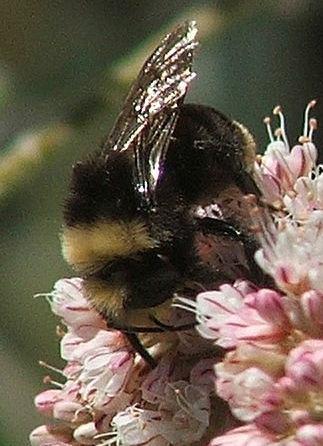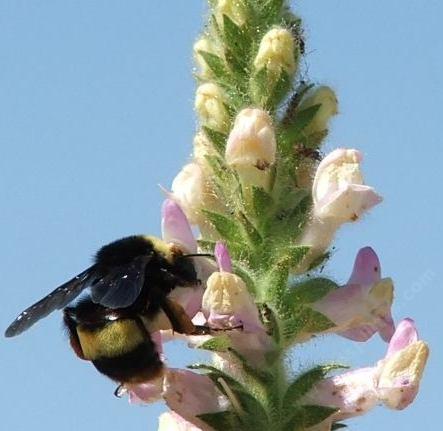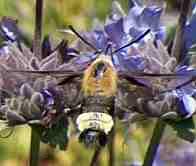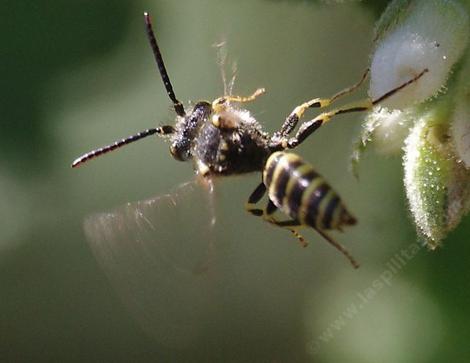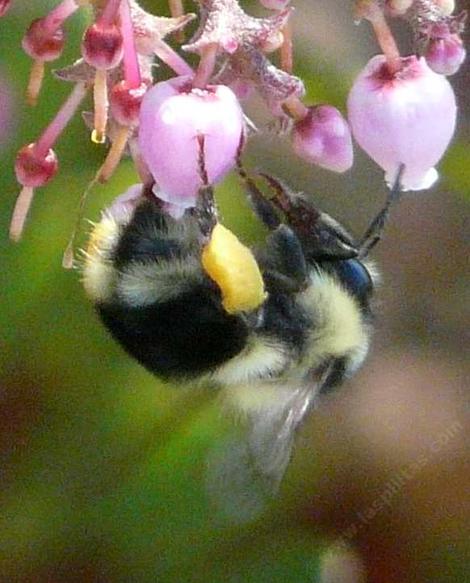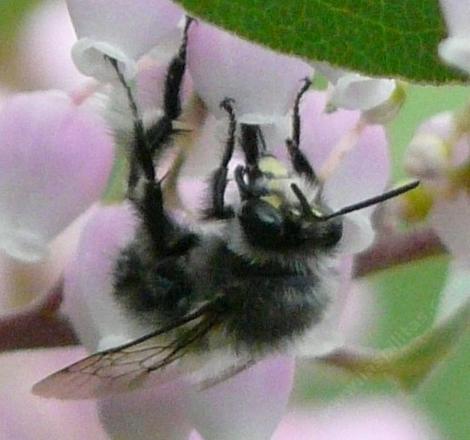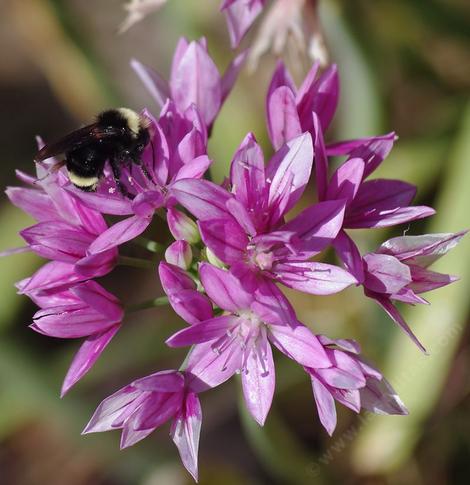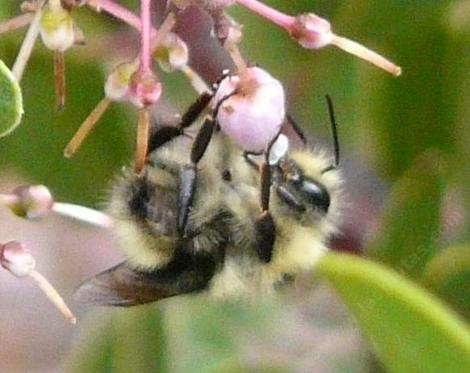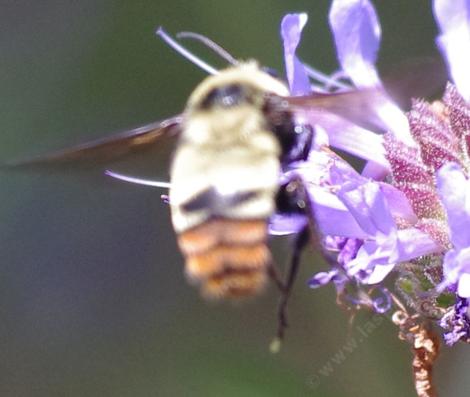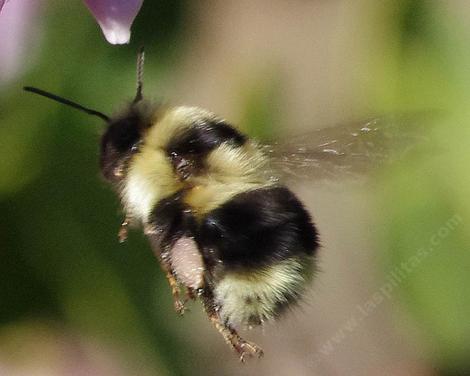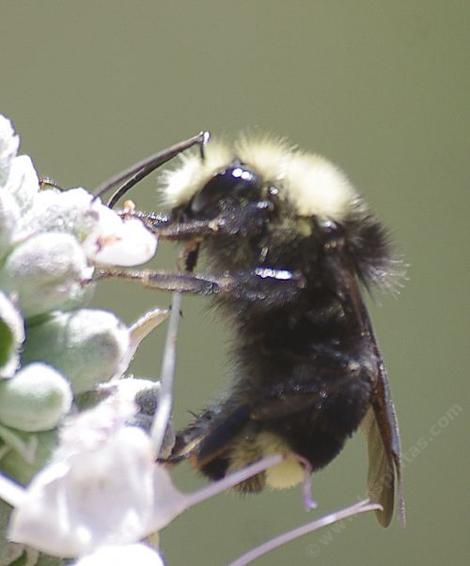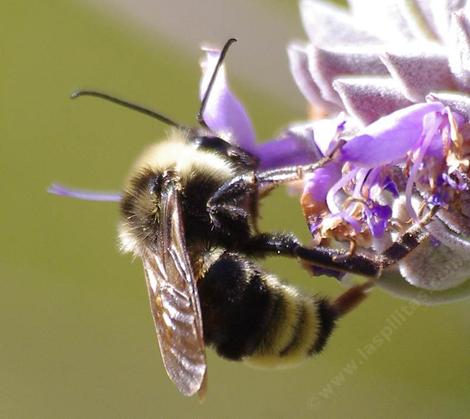Plants to attract bumblebees and other interesting native bees
This is a compilation of our own observations and a little bit of research online. It is a place to start if you want to plant a bee garden or are interested in planting native bee plants to increase native pollinators in your garden or orchard.
California has a diverse bee population
There
are one thousand species of California native bees, 26 of
these are
bumblebees and most of the rest are solitary bees. That
is, they do not
live in a hive with drones and all the rest. Some bee
species are very
specific in their needs. Andrena
limnanthis Hesperandrena,
a native solitary bee, visits only specific species of the
vernal pool
flower, Meadow Foam, Limnanthes
sp. The native bees will prefer
natives from their area. Some bees are very restricted in
their range
and may not know what to do with stuff that is too far
removed from
their home, even if it is native to California. Many other
native bees will work the available flowers that are in
the families of flora they are used to.
Bee society and nesting
Solitary bees usually nest in the ground, in holes they excavate themselves or in old rodent holes. A single female will prepare her earthen nest, build a few cells, lay her eggs, and collect pollen for them. Sound familiar? Although they nest alone, many females may lay in the same area. So if the area is good for native bees you may end up with bumblebee, digger bees and mier bees all living next to each other. Because many bees nest in the ground, don't disturb the soil by tilling or scraping. These actions will also encourage more weeds. You want clean bare ground with no European grasses, Mustard, Star thistle, etc. Native wild flowers are Ok. See also Digger Bee
California Native bees are excellent pollinators.
California native bees are great for your vegetable garden. The Yellow-faced bumblebee and the California bumblebee are great for Tomatoes. The more pollinators you have the more insect pollinated fruit you will get . (Sorry, bees aren't going to do a thing for wind pollinated stuff.) Try to protect the native plants that support your pollinators. If you don't have any native areas around you can plant a little native garden.
European weeds are preferred by European bees. European honey bees will pollinate your weeds and help them proliferate!
What to plant to attract
Native bees
(See plant list on the right)
Try to plant lots of different shaped flowers. Bees vary in body size and feeding parts, so plant accordingly.
A varied diet is always a good thing. Even if you love to eat spaghetti, you don't want to eat it every day.
Try to plant things with different flowering times so there will always be something to eat at your house. Manzanitas are a good plant for early in the season. This is an important time for bees as they have just started nesting and there aren't a lot of things flowering.
Plant
many of the same plants together. Don't scatter them
throughout the
garden. This is more likely to attract the bee's attention
and lure
them over.
Other
native pollinators that might interest you.
Carpenter Bees look similar
to Bumblebees.
List of California native plants for bees
Click on the links to purchase the plants or just to get more information about growing conditions, wildlife uses or view picture.
Genera Pages
Arctostaphylos sp. California Manzanitas
Ceanothus sp. California Wild Lilacs
Eriogonum Sp, California Buckwheats
Penstemon sp. California Penstemons
Ribes sp. California Currants and gooseberries
Species Pages
Achillea sp, Yarrow (any species)
Antirrhinum multiflorum, Multiflowered Snapdragon
Calystegia macrostegia, Morning Glory
Chilopsis linearis, Desert Willow
Chrysothamnus nauseosus, Rabbit Brush
Eriophyllum sp., Golden Yarrow
Lobelia dunnii serrata, Blue Lobelia
Mahonia nevinii, Gray Blue Bird Bush
Monardella sp. Butterfly Mint Bush (any species)
Phacelia imbricata, Pine Bee Flower
Sambucus mexicana or S. caerulea, Elderberry
Salix sp., Willow (Any species)
Scrophularia californica, California Figwort
Solidago sp., Golden Rod (any species)
